Efforts Underway to Restore Two Surviving Fletcher-class WWII Destroyers
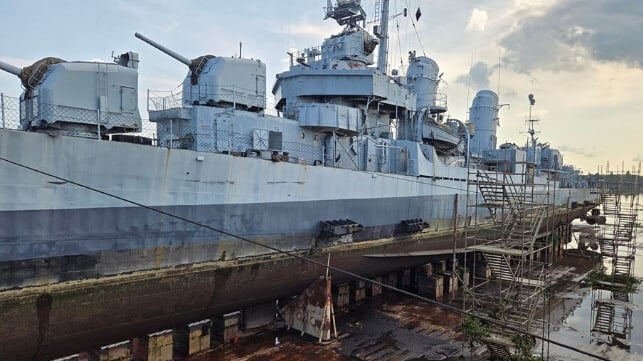
Two of the surviving World War II era U.S. Fletcher-class destroyers are getting much-needed preservation work after years of service as museum ships. USS Kidd entered dry dock this week after a long delay while in New York funding was announced for the repairs to USS The Sullivans.
The Fletcher-class was the largest and most important destroyer class for the U.S. Navy during WWII with the U.S. building and commissioning 175 of the vessels in just three years from 1942 to 1944. Today, only three survive in the U.S., with only Kidd in its original WWII wartime configuration, and one more sister ship is in Greece.
Both Kidd and The Sullivans are in desperate need of repairs. The Sullivans sank at her berth in Buffalo, New York in April 2022. It required an extraordinary effort to right the ship from her list and make temporary repairs. The repairs need to be made permanent to ensure that she remains afloat. USS Kidd is normally on display in Baton Rouge, Louisiana, but her director told the Advocate newspaper if the repair effort had waited another year “she might have sunk right in the cradle.”
Kidd
Launched from the Federal Shipbuilding & Dry-dock Company in New Jersey, Kidd was the U.S. Navy’s 661 destroyer (her designation is D-661) and she was part of a record-breaking three-ship launch completed in just 14 minutes on February 28, 1943. She was named after Rear Admiral Isaac Campbell Kidd, Sr. who was killed aboard USS Arizona during the December 7, 1941, attack on Pearl Harbor, Hawaii.
Kidd went on to distinguished service earning eight battle stars during World War II and four additional for service in Korea. She, however, was decommissioned in 1964 and would have eventually gone to scrap except she was left largely intact, and instead, she was designated to become a museum ship. She arrived in Baton Rouge in 1982 and opened the following year as part of the USS Kidd Veterans Museum. (Read her full history online.)
The display in Baton Rouge is unique because of the water level changes during the year on the Mississippi River. Kidd was placed in a specially designed cradle. Half the year she is afloat and then as the river level falls, she sits on dry dock blocks. The arrangement however after 40 years has caused damage to the hull. Getting her out of the cradle was a challenge due to the water level, and they had to remove four feet of her rudder.
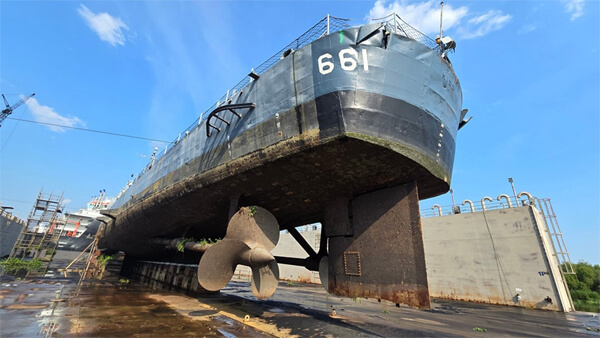
USS Kidd in dry dock -- note the cut to her rudder (USS Kidd Veterans Museum)
The ship was stuck in Baton Rouge in 2023 due to a drought and finally moved to ThomaSea shipyard in Houma, Louisiana in April. She had been undergoing some dockside work waiting for the dry dock where she was moved on August 13 in a 7-hour process. The full project is projected to cost $11 million for major repairs and renovation including the hull, repainting, installation of a new sewage system, and repairs to the cradle. Kidd should leave the dry dock in February but will have to wait till possibly May 2025 and a sufficient water level to return to Baton Rouge and her cradle.
The Sullivans
Shortly after Kidd should return to her museum, The Sullivans is expected to leave Buffalo in September 2025 for a dry dock in Lake Erie where she along with the submarine USS Croaker are scheduled for repairs. Both ships should return to Buffalo in the spring of 2026.
New York Governor Kathy Hochul announced this week that the state is providing $10 million toward the restoration project for Kidd and a submarine which is expected to total nearly $21 million. Additional local, state, and federal funding for $11 million has also been committed to the project.
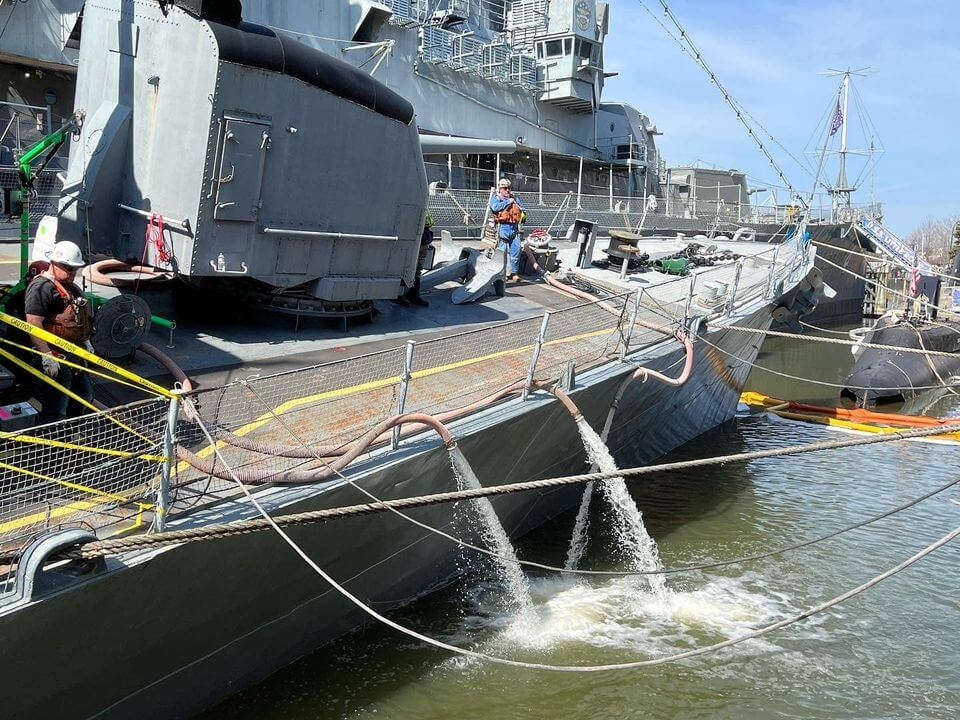
The Sullivans dewatering after she sunk in 2022
The Sullivans (D-537) is unusual as she is named for multiple people, in this case five brothers who famously died together aboard the USS Juneau in November 1942. The destroyer was commissioned in their honor in April 1943 and was decommissioned in 1965 with 11 battle stars. She was moved to Buffalo for display in 1977. (Read her full history online.)
New York’s funding will also go to the restoration work on USS Croaker, one of 77 Gato-class submarines constructed during World War II. Commissioned in 1944, she conducted six war patrols in the Pacific theater and remained active till being decommissioned in 1971. She was placed on display alongside The Sullivans in 1988, but Croaker is not in her original World War II configuration. She was converted to a “hunter-killer” submarine with added sonar, radar, and quieting capabilities to combat the Russian threat during the Cold War.
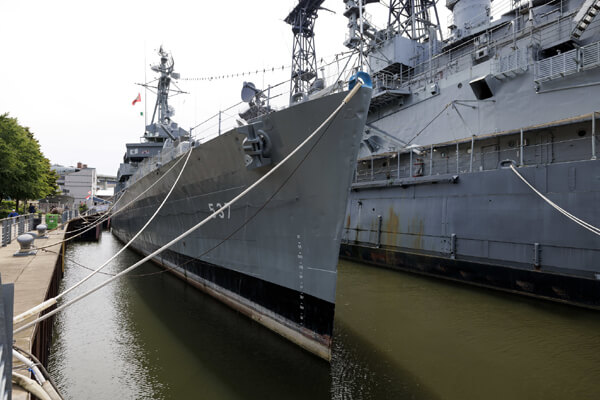
The Sullivans is part of a multi-ship display in Buffalo (NY State)
These projects come after a flurry of other high-profile restorations this year in the United States. The battleships USS Texas and USS New Jersey each completed extensive dry dockings. John W. Brown, one of only two remaining, fully operational WWII “Liberty ships,” is spending July and August in a dry dock in Norfolk, Virginia. After she arrived, it was discovered that she required more extensive hull repairs. The hull work was completed this week, and she is scheduled to leave the dry dock next week and later will return to her berth in Baltimore.

that matters most
Get the latest maritime news delivered to your inbox daily.
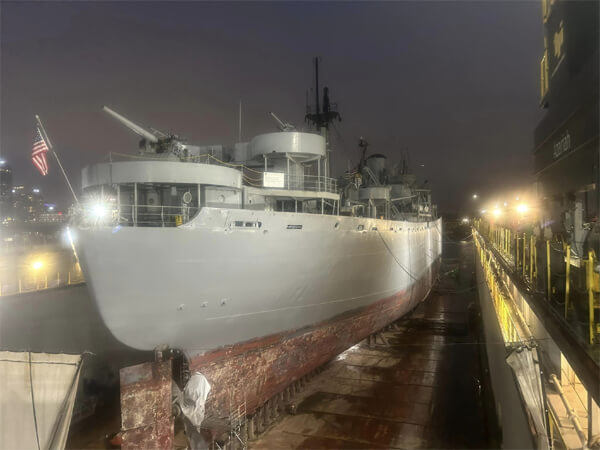
John W. Brown nearing completion of her overhaul in Virginia -- SS John W. Brown (Project Liberty Ship)/Facebook
